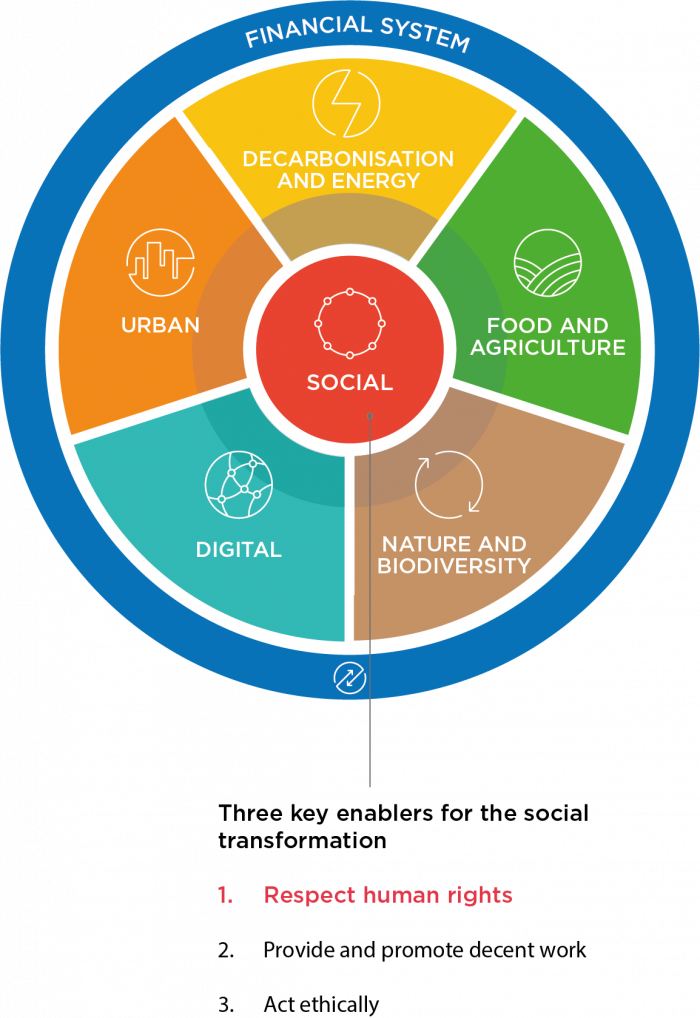Introducing our revised methodology for the Corporate Human Rights Benchmark

On 30th September 2021, following a review process which began in 2020, the World Benchmarking Alliance published a revised version of the Corporate Human Rights Benchmark (CHRB) Methodology. The CHRB methodology was originally published in 2016 and has been used to assess some of the largest global companies in high-risk industries for human rights impacts, through several benchmark iterations from 2017 to 2020. This blog – the first in a series – summarises the review process, and explains how the CHRB sits within our wider mandate of assessing companies on their respect for human rights and their contributions towards the Sustainable Development Goals.
What were the objectives of the CHRB methodology review?
- To reflect on the past four years of applying the methodology and see where improvements could be made, where requirements could be clarified.
- To ensure that the methodology continued to be up-to-date and aligned with societal expectations. Since the methodology was first developed in 2014–2016, many standards, guidelines and frameworks have been updated. Some topics have become more accepted or increasingly recognised. Updating the methodology to reflect these changes is important to ensure that the data produced by the benchmark is both reliable and relevant for the stakeholders who use it.
- To increase alignment with our other benchmarks, so that what is asked of companies across different frameworks is coherent and complementary.
The review process and outcomes
To fulfil these objectives, the review process consisted of two elements: desk-based research and extensive multi-stakeholder consultation. We cannot emphasise enough how grateful we are to the individuals and organisations who committed their time and expertise to input into the methodology review. It is these contributions that guarantee the quality of the methodology, and ultimately the quality of the data that comes out of the benchmarking process.
The outcome of the review was an updated CHRB methodology, which incorporates as much of the feedback received as possible, and continues to be grounded in internationally recognised instruments, at the heart of which is the UN Guiding Principles on Business and Human Rights. The revised methodology will be used to assess companies in high-risk sectors from next year onwards, starting with companies in the automotive manufacturing, ICT manufacturing and food and agriculture sectors in 2022.
Updating the methodology to reflect these changes is important to ensure that the data produced by the benchmark is both reliable and relevant for the stakeholders who use it.
Human rights and the SDGs
We also used the opportunity of the methodology review to reflect on, and clarify how human rights are assessed by the World Benchmarking Alliance (WBA) beyond just the CHRB. Read our paper ”Ensuring corporate respect for human rights: A benchmarking approach”. WBA develops free and publicly available benchmarks that measure and incentivise company contributions towards the Sustainable Development Goals (SDGs). Human rights are inextricably linked to these goals – over 90% of the SDG targets are directly connected to international and regional human rights instruments and labour standards. This is reflected in the central premise of the SDG agenda to ‘leave no one behind’.
Recognising this, we have placed the transformation of the social system at the heart of the model that guides our benchmarking process. Respect for human rights is the basis of this transformation. When we talk about business, it is easy to forget that we are really talking about people. Companies are collections of people, whose decisions and actions impact other people: employees and their families, surrounding communities, workers in companies’ value chains, and the customers who buy their products and services. It therefore seems only right for companies to put people at the heart of what they do – and for WBA to put people at the heart of its corporate benchmarks.

In practice, this means that all 2,000 companies on our SDG2000 list will be assessed on human rights, with a set of core social indicators that are embedded in all of our benchmarks, as well as specific indicators that are relevant to their industry. An assessment of the first 1,000 companies will be published in January 2021. Additionally, using the revised CHRB methodology, we will continue to conduct in-depth assessments of a subset of these companies, evaluating sectors that have been identified as high-risk in terms of their human rights impacts.
The blog series
This blog is the first in a series that will highlight some of the key changes to the CHRB methodology. Other blogs in the series will come from a variety of stakeholders who provided input into the review to make sure that the methodology reflected important topics or developments – who better than them to emphasise their importance? We hope that this blog series will provide an account of the key themes that came out of the review process, and reflect some trends in the business and human rights landscape.
Camille Le Pors is the Corporate Human Rights Benchmark Lead at the World Benchmarking Alliance.

